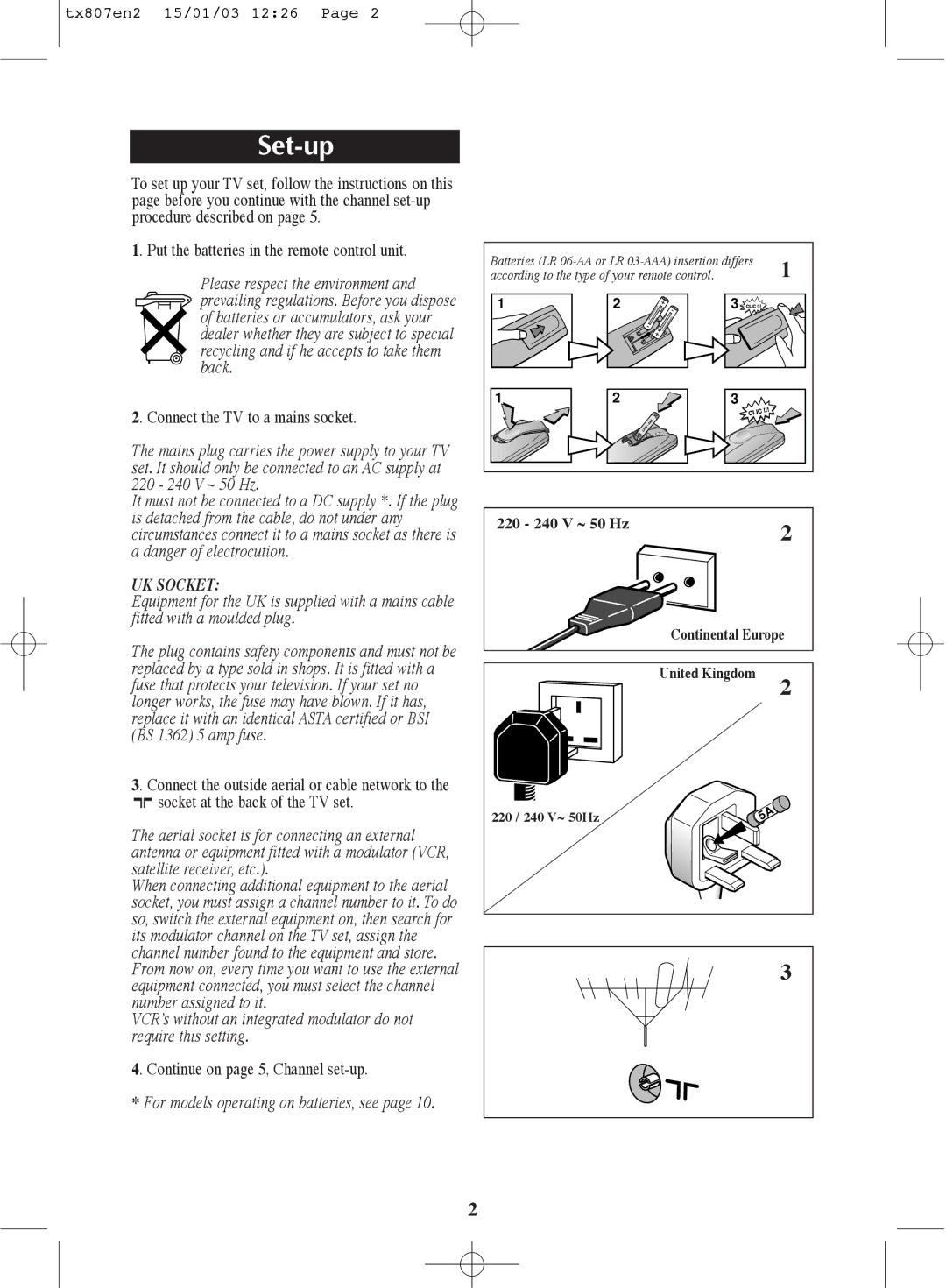
tx807en2 15/01/03 12:26 Page 2
Set-up
To set up your TV set, follow the instructions on this page before you continue with the channel
1. Put the batteries in the remote control unit.
Please respect the environment and
Batteries (LR | 1 |
according to the type of your remote control. |
prevailing regulations. Before you dispose of batteries or accumulators, ask your dealer whether they are subject to special recycling and if he accepts to take them back.
2. Connect the TV to a mains socket.
The mains plug carries the power supply to your TV set. It should only be connected to an AC supply at 220 - 240 V ~ 50 Hz.
1 |
1 |
2 |
2 |
3 |
3 |
It must not be connected to a DC supply *. If the plug is detached from the cable, do not under any circumstances connect it to a mains socket as there is a danger of electrocution.
UK SOCKET:
Equipment for the UK is supplied with a mains cable fitted with a moulded plug.
The plug contains safety components and must not be replaced by a type sold in shops. It is fitted with a fuse that protects your television. If your set no longer works, the fuse may have blown. If it has, replace it with an identical ASTA certified or BSI (BS 1362) 5 amp fuse.
3. Connect the outside aerial or cable network to the gsocket at the back of the TV set.
The aerial socket is for connecting an external antenna or equipment fitted with a modulator (VCR, satellite receiver, etc.).
When connecting additional equipment to the aerial socket, you must assign a channel number to it. To do so, switch the external equipment on, then search for its modulator channel on the TV set, assign the channel number found to the equipment and store. From now on, every time you want to use the external equipment connected, you must select the channel number assigned to it.
VCRÕs without an integrated modulator do not require this setting.
4. Continue on page 5, Channel
*For models operating on batteries, see page 10.
220 - 240 V ~ 50 Hz | 2 |
|
Continental Europe
United Kingdom | 2 |
220 / 240 V~ 50Hz |
|
| 3 |
2
